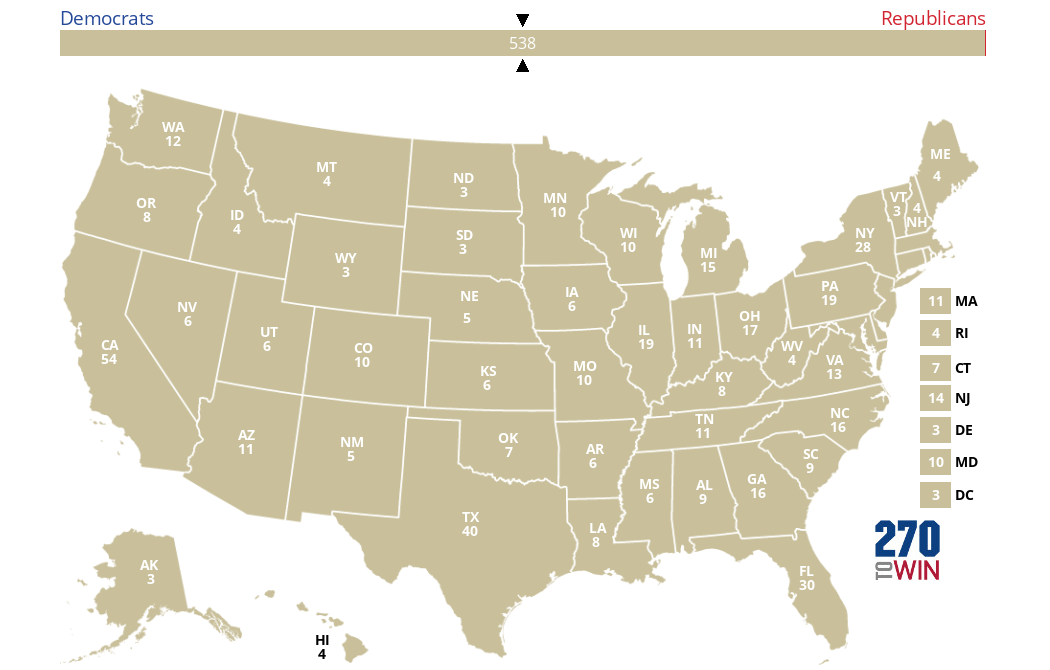
People wait to vote Tuesday, Nov. 8, 2022 at the Brook Hollow Branch Library during the midterm elections.
William Luther/StaffWe’re one day away from Election Day. On Tuesday, November 5, registered voters will have one last chance to cast a ballot in the general election for president.
The state and local races will be called or run-offs determined as soon as votes are tabulated and counted, barring recounts that are ordered. Any runoff elections needed in Texas will be held on December 14, according to the Texas Secretary of State.
But for the race for president and vice president, the winner will ultimately be determined by the Electoral College. The “college” consists of 538 electors, and Texas contributes 40 electoral voters to that total. California is the only state to have more with 54. Each state has the same number of electors as it does members in its Congressional delegation: one for each member in the House of Representatives plus two senators.
Article continues below this ad
More For You
To win the Electoral College, a presidential candidate needs to receive a majority of 270 electoral votes.
Pew Research Center published a study in September that states that a majority of Americans want to move away from the Electoral College. Sixty-three percent of more than 9,700 Americans surveyed said they would like “to see the winner of the presidential election be the person who wins the most votes nationally.”
Article continues below this ad
How is the Electoral College chosen?
Each state has different procedures for how electors are chosen. To be eligible to serve as a presidential elector in Texas, the law stipulates a person must: be a qualified voter; and not hold the office of U.S. senator, U.S. representative, or any other federal office of profit or trust.
The National Association of Secretaries of State outlined how each of state selects their electors. For Texas:
- A person must be nominated as a political party’s elector candidate in accordance with party rules.
- The party’s state chair must sign a written certification of the names of presidential elector candidates nominated by the party and the party’s state chair must deliver the written certification to the secretary of state.
- If an elector candidate withdraws, dies, or is declared ineligible before presidential election day, a replacement elector candidate may be named by the party that nominated the elector candidate.
- The electors shall convene at the State Capitol at 2 p.m. on the first Monday after the second Wednesday in December following their election and shall perform their duties as prescribed by federal law.
Article continues below this ad
The National Archives states that when the voters in each state cast votes for the presidential candidate of their choice they are voting to select their state’s electors. Each party’s “slate” of electors includes those who were nominated according to the rules above, and the voters are responsible for selecting the potential electors through their ballot.
Although the elector’s do not officially cast their vote until December 17, states “may enforce an elector’s pledge to support his party’s nominee—and the state voters’ choice—for President,” according to a July 6, 2020, U.S. Supreme Court ruling. The opinion states that “electors are not free agents; they are to vote for the candidate whom the State’s voters have chosen.”
Does the electoral college have to vote with the popular vote?
Pew Research Center states the candidate who receives the most votes in that state is awarded all of its electoral votes in 48 states and Washington D.C. Nebraska and Maine, who have five and four electoral votes respectively, allocates two electoral votes to the candidate who wins the most votes statewide and one to the winner of each congressional district.
Article continues below this ad
That means that Texas gives all 40 of its Electoral College votes to the winner of the popular vote in the Lone Star State.
The candidate who gets the most votes nationally can still lose the electoral college and it has happened four times in American history, according to The Conversation: In 1876, 1888, 2000 and most recently in 2016 when Hillary Clinton netted 65.8 million votes and Donald Trump had 62.9 million votes. Trump received 304 Electoral College votes and Clinton received 227.
Electoral College map
Here is a blank Electoral College map that shows how many votes electoral votes state gets.
Article continues below this ad
Who is winning the election now?
According to NBC News, nearly 8 million ballots were cast in Texas by Friday, November 1.
Of the 7,933,714 mail-in and early in-person votes cast in Texas at the time of writing, the party demographics were broken down as
Article continues below this ad
- 51% of registered Republicans who voted
- 37% of registered Democrats
- 12% “Other”
Nationally, NBC News reports that 64,910,122 mail-in and early in-person votes have been cast across the country at the time of writing. That party demographic is broken down as:
- 41% of registered Democrats
- 40% of registered Republicans
- 19% “Other”

